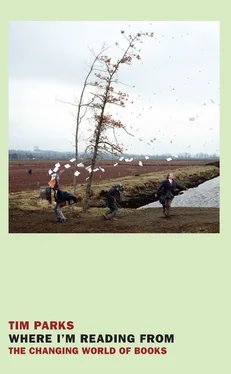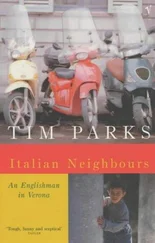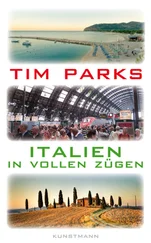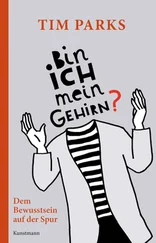Magical realism was not, of course, confined to South America. Among others, a number of Anglo-Indian authors used their own versions of the style to create a new vision of India for international readers; one of those authors was so spectacularly out of touch with the nation he was supposedly presenting to the West that the violent reaction to his Satanic Verses after its publication in India caught him entirely by surprise. Francesca Orsini, a scholar of Hindi literature (and an Italian academic working at the University of London), posed an interesting question: There are many important books written in the languages of the subcontinent and then translated into English, among them Bhalchandra Nemade’s Cocoon , Vinod Kumar Shukla’s The Servant’s Shirt , Geetanjali Shree’s Mai , and Krishna Sobti’s The Heart Has Its Reasons . Why do they not have the same international success as works by Anglo-Indian authors like Rushdie, Vikram Seth, and Arundhati Roy? Translation, she remarked, could make a novel available, but the real exoticism of the truly foreign text remained a barrier to most readers.
Zuccato, the Milanese poet, might have been answering her when he made an impassioned attack on the whole concept of postcolonial literature. He suggested that those postwar writers in Africa and India who had chosen to write in English and French for the international community have not only given us a superficial and easily consumed exoticism; in doing so they have made it less likely that a Western public will make the effort to read those working in the local languages and offering something that would be genuinely “other” from the Western novel package we are used to. The Milan-based literary agent Marco Vigevani rather confirmed this when he pointed out the situation of Arab-language writers such as the Lebanese Hassan Daoud and the Egyptian Makkawi Said, who work in traditional genres that mix poetry and prose and that have no Western corollary. Prominent in the Arab world, these writers get almost no attention in the West because nobody has any idea how to read the kind of works they write even when they are translated.
What I found fascinating, as this discussion bounced back and forth, was that no one seemed to accept the idea that it might be enough to address one’s own community, that perhaps it was not strictly necessary to appear in this global space or contribute to its formation. Why should the literary world allow itself to be hijacked by this larger project?
The ideal of a single world community is an entirely honorable thing, but when literature (like football) becomes an instrument for creating that community, then there are other implications that may not be so attractive. Bas Heijne, a Dutch essayist and critic, suggested that globalization invites us to see our own cultures as foreign and minor and even proposed that as English dominates the international literary scene, fiction is becoming more and more self-referential and less genuinely engaged with any society. However, despite Heijne’s fascinating arguments, none of his own considerable body of work is available in English. Who would translate a Dutch essayist? According to one ominous prediction, fielded in David Crystal’s book Language Death , by 2100 between 50 and 90 percent of the world’s languages will have disappeared.
Was the IULM conference itself part of this process? With speakers from many countries, all the sessions and discussions were in English. Some later complained that the novelists who participated, and who do not write in English, Peter Stamm and Jorge Volpi, should have read at least something in their native languages and not exclusively in English translation, though the writers themselves seemed happy enough to read in the language most widely understood. Some of the English participants found the accents of those speaking English as a second language hard to handle. Some of the nonacademics found the academic jargon of one or two high-powered professors incomprehensible, even though they shared the same tongue, while an Italian doctorate student told me she found the academics easier to understand, because Italians are all too used to scholarly jargon; it was the colloquialisms and accents of the non-academic, native English speakers she found impossible.
Yet curiously, despite all this trouble communicating, everybody seemed happy simply to be there. Sometimes, perhaps, it’s not important really to understand, but simply to feel one is present and participating in the huge new community that is forming.
SHORTLY BEFORE HIS death in 1980, the great anthropologist Gregory Bateson suggested that social engineering was like trying to reverse a truck with five or six trailers attached to it through a complex maze; you might get somewhere, but where and with what collateral damage would never be clear. So it’s hardly a surprise that the decision in many countries around Europe to insist on English as a second language—to facilitate trade of course and to promote a global scientific community—has had some unexpected effects, not least on literature.
In Milan, where I live, the city polytechnic has announced that some graduate programs are soon to be taught exclusively in English. But Italy is hardly in the forefront. About 56 percent of Europeans speak a second language, and for 38 percent of them that language is English. In Scandinavia and the Netherlands, where it’s fairly common to find university courses taught in English, the figure is more like 90 percent. Even where the percentage is smaller we are nevertheless talking about the most educated part of the community, those more likely to be reading novels, particularly literary novels.
Inevitably, as the number of people speaking English increases, so do the sales of novels in English. But not enormously. The surprise is that increased knowledge of English has also brought a much more marked increase in sales of literature written in English but read in translation in the local language. When you learn a language you don’t just pick up a means of communication, you buy into a culture, you get interested.
Statistics provided by the Dutch Fund for Literature show that while the number of Dutch translations of works coming from other languages has been static, or risen only slowly, as English is taught more and more widely in schools and universities there has been a huge leap in translations from English. In 1946 only 5 percent of Holland’s book production was made up of translations; by 2005 it had reached 35 percent, and in the area of prose fiction the share had grown to 71 percent. Of those translations, 75 percent now come from English. What figures I have managed to find for Germany and Italy do not differ a great deal.
At IULM University in Milan, we have a group research project on the effects of globalization on literature. Last year, as part of this project, I went to Holland, where publishers and readers have always been generous to me, and over a month spent a number of afternoons in a bookshop in the center of Amsterdam talking to customers about their reading choices. All in all I managed forty fifteen-minute interviews with “ordinary” readers aged between twenty and sixty and evenly distributed between men and women; all but one older interviewee told me they read mainly foreign novels.
When I asked people to list titles they had recently read, they seemed surprised themselves how prevalently English and American, rather than simply foreign, these novels were. A linguist from Amsterdam University, for example, went away and jotted down the names of all the novelists on his shelves: fifty-eight Anglophone authors (many were Booker and Pulitzer winners), nineteen from eight other countries and twenty Dutch. Until he wrote down this list, he remarked, he had not been aware how far his reading was driven by publicity and availability. Indeed, no one spoke of any method behind his or her choice of novels (as opposed to nonfiction, where people declared very specific and usually local interests).
Читать дальше












